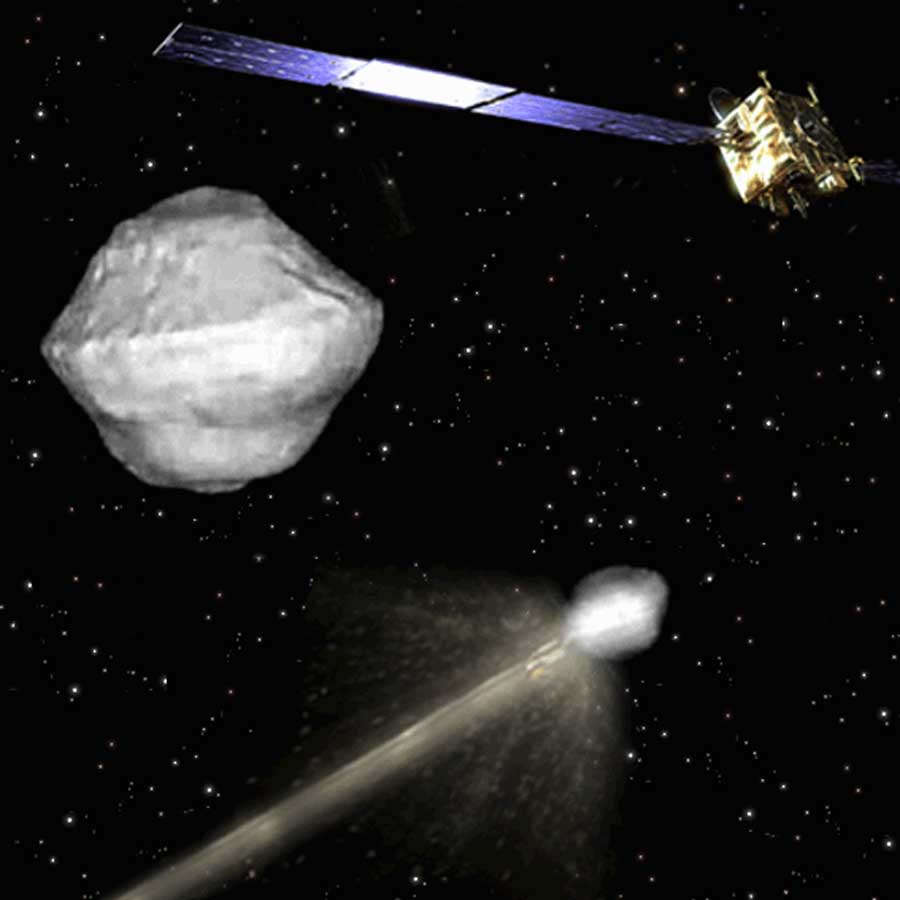For the last two years, ESA has been working with international partners on the mission concept. Last week, research centers each side of the Atlantic agreed the spacecraft would target asteroid Didymos. Currently under study, the mission would intercept Didymos around the time of the asteroid’s closest approach to within 7 million miles (11 million kilometers) of Earth in 2022.
Didymos is a “binary” with two asteroids orbiting each other — one is roughly 2600 feet (800 meters) across, the other about 500 feet (150m).
AIDA is a low-budget international effort that would send two small craft to intercept a double target. While one probe smashes into the smaller asteroid at around 3.99 miles per second (6.25 km/s), the other records what happens.
One effect would be a change in the orbital ballet of the two objects. AIDA is not intended to show how we could deflect an asteroid that threatens Earth, but it would be a first step.
The craft are conceived to be independent and could achieve most of their goals alone. The collider is the Double Asteroid Redirection Test (DART) from the Johns Hopkins’ Applied Physics Laboratory in Laurel, Maryland. ESA’s Asteroid Impact Monitor (AIM) would survey Didymos in detail, before and after the collision.
Didymos poses no risk to our planet, but will come close enough to be observable by 1– to 2–meter–diameter telescopes on Earth before and after the strike. AIM’s close-up view would provide “ground truth” and observe the impact dynamics as well as the resulting crater, allowing ground-based observations and models to be evaluated.
Earlier this month, ESA issued a call for scientists to propose experiments that could be carried on the mission or performed on the ground to increase its return.
“AIDA is not just an asteroid mission, it is also meant as a research platform open to all different mission users,” said Andrés Gálvez from ESA.
“The project has value in many areas,” said Andy Cheng of Johns Hopkins’ Applied Physics Laboratory, “from applied science and exploration to asteroid resource utilization.”
Researchers have until March 15 to express their interest. The experiment ideas can be anything that deals with hypervelocity impacts, planetary science, planetary defense, human exploration, or innovation in spacecraft operations.
The energy released in the AIDA impact at several miles per second is similar to that of a large piece of space junk hitting a satellite. The mission would thus help to model severe spacecraft damage by space debris.










